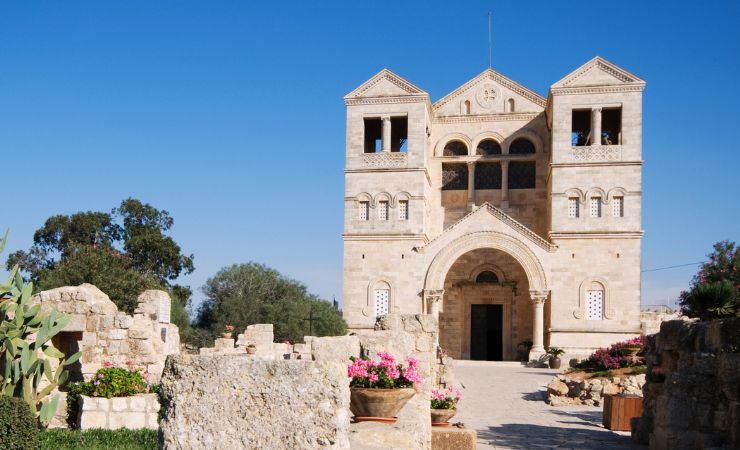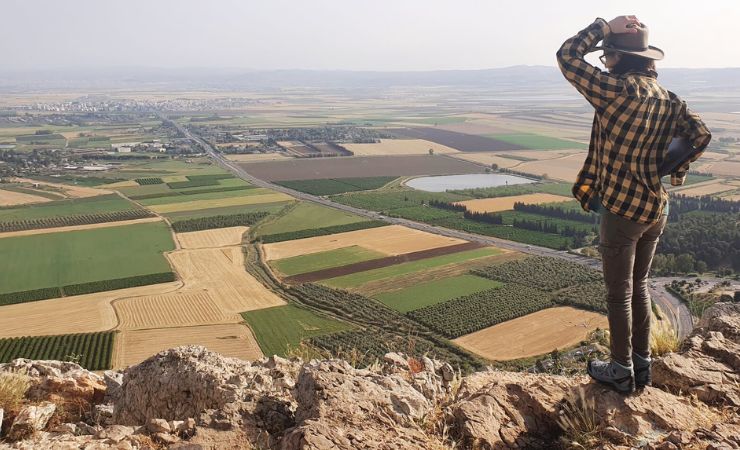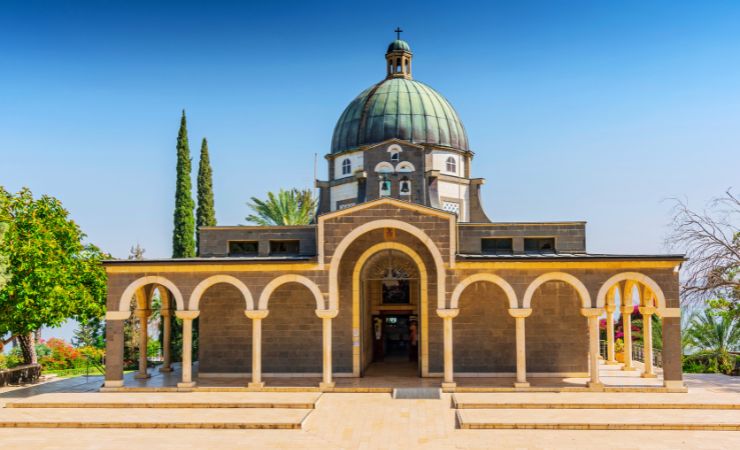A Synagogue From the Time of Jesus in Magdala
Introduction
Magdala, known in ancient times as Migdal, was a bustling center of commerce and spirituality 2000 years ago. It is believed to be the birthplace of Mary Magdalene, one of the most enigmatic and celebrated figures in Christian tradition. One one of the rarest findings from the time of the Second Temple was found during archeological excavations. Magdala is part of the Jesus Trail.
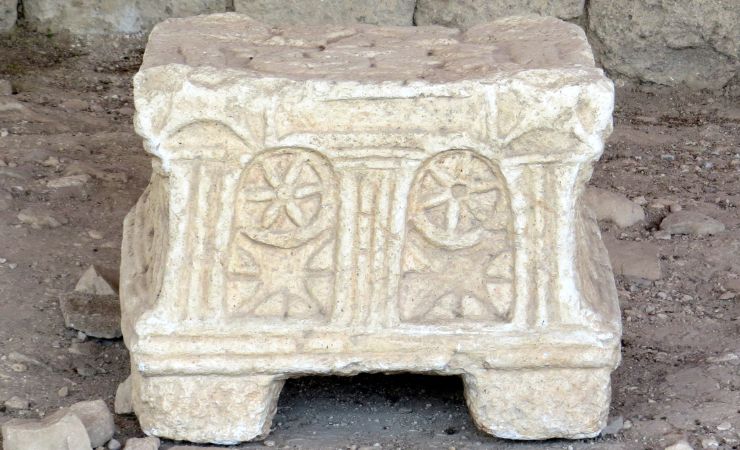
Location
Nestled on the shores of the Sea of Galilee, Magdala lies 5 kilometers north of Tiberias in the region of Galilee, Israel.
Biblical Context of Magdala
Magdala is often associated with Mary Magdalene, one of Jesus’ earliest followers and the first witness to his resurrection. The assumption that Mary was from Magdala, however, is speculative.
Magdala holds a special place in Christian tradition as the birthplace of Mary Magdalene, a follower of Jesus. All four Gospels refer to Mary Magdalene, and most Christian scholars assume that she was from Magdala.
The city is also mentioned in the New Testament, although there is some dispute over the exact references. Matthew 15:39 refers to a place called “Magdala” or “Magadan,” while Mark 8:10 mentions a place called “Dalmanutha.” Some scholars believe these references may all point to the same location.
Some scholars, such as Elizabeth Schrader, a doctoral student at Duke University, and Joan Taylor, a professor at King’s College, London, argue that “Magdalene” may not refer to Mary’s place of origin but could be an honorific from the Hebrew and Aramaic roots for “tower” or “magnified”. They suggest that Mary could have acquired the title “Magdalene” meaning “tower of faith,” or “Mary the magnified”.
The History of Magdala
The city of Magdala originated as a small settlement during the Hellenistic period (between the second and first centuries BCE) and evolved into a significant urban center by the first century CE. Known for its prosperous fishing industry, it was a major hub for the processing and trade of salted fish.
Magdala, also known as Migdal, is a small town located on the western shore of the Sea of Galilee in northern Israel. It is historically significant as the birthplace of Mary Magdalene, one of Jesus’ followers who is mentioned in the New Testament. In ancient times, Magdala was a prosperous fishing village and a major center for the processing of fish. It was fortified and severely damaged during the great revolt against the Romans.
The archaeologists uncovered the remains of the village dating from the time of Jesus, and a large Byzantine monastery. Excavations in the village have revealed the remains of a first-century synagogue, which is believed to be one of the oldest synagogues in the world. Today, the ancient site Magdala is a popular destination for Christian pilgrims visiting Israel. The town is home to the Magdala Center, which is a spiritual and cultural center that includes a museum, an archeological park, a chapel, and a guesthouse. The center’s mission is to promote Christian values and foster interfaith dialogue.
Magdala, or its Greek name Taricheae, became an important city in the Hellenistic period. Its location on the ancient road made it strategically important. The water springs nearby, fertile land and fishing industry – all these made it the center city of one of the three Galilee regions in the Jewish Kingdom prior to the Romans1. The town reached its zenith in the Early Roman period. After Tiberias was established (18 CE) in the early Roman period, Magdala started to lose its importance, although initially the Jewish population refused to settle in the new city.
During the Jewish revolt it was fortified (66 CE), but suffered a tragic end (67 CE) by the Roman forces. It continued, on a smaller scale, as a Roman and Byzantine village. Since the 19th century an Arabic village was located around the ruins of Magdala, called al-Majdal (in Arabic: “the Tower”), preserving the ancient name. The village was evacuated in 1948 and its buildings were cleared out of the area.
Sources and Additional Reading
Wikipedia – Madgala
Was Mary Magdalene really from Magdala?
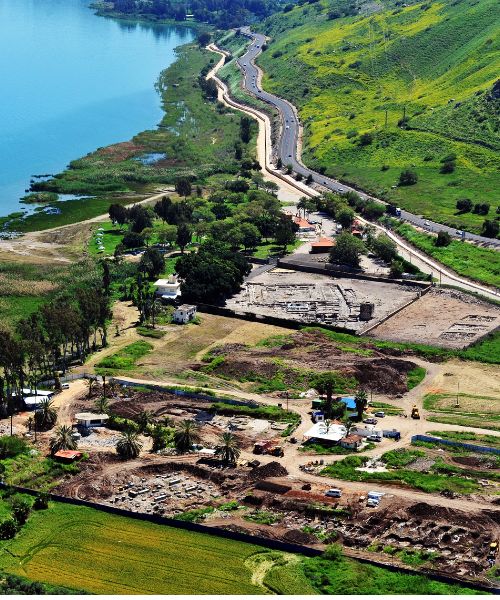
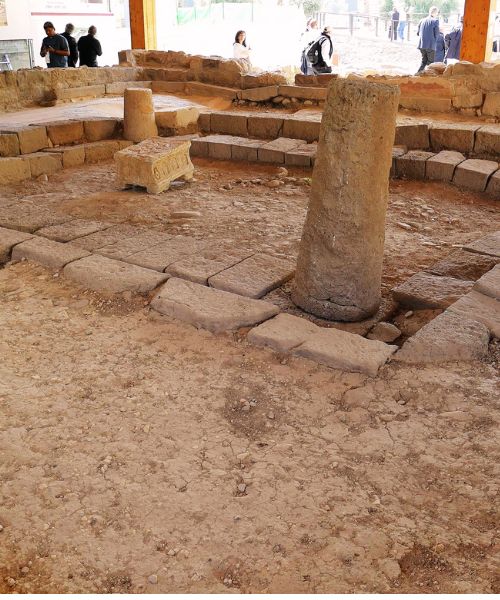
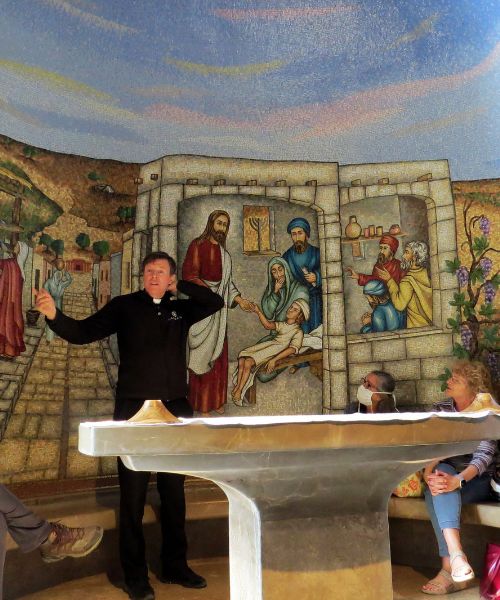
The Migdal Synagogue: A rare finding in Israel
Unearthed in 2009, the Migdal Synagogue is a treasure trove of history. Covering approximately 120 square meters, it’s adorned with intricately designed and colored frescos. Stone benches built against the walls and a partial mosaic floor provide a glimpse into the architectural style of the period.
This synagogue is one of about ten known synagogues dating back to the Second Temple period. The scarcity of such synagogues is attributed to the prevalent religious practice of the time. Synagogues were used to study but not as a place of prayer. The place of prayer was restricted to the Temple. Pilgrimages to the Temple in Jerusalem were done for the Three Pilgrimage Festivals of Passover, Shavuot, and Sukkot.
Interestingly, another synagogue from the same period was discovered in Magdala in 2021. This synagogue, built in basalt and limestone, featured a main hall and two other rooms. It was located close to a residential street, providing a stark contrast to the first synagogue, which was surrounded by an ancient industrial zone.
The Migdal Stone: A glipmse of the Second Temple
The Migdal Stone, discovered within the Migdal Synagogue, is a carved stone block dating to before the destruction of the Second Temple in Jerusalem in the year 70. The stone is notable for its detailed carvings depicting the Second Temple. These are assumed to have been made by an artist who had seen the Temple before its destruction by the Roman military.
The stone measures approximately 0.6 meters long, around 0.5 meters wide, and stands 0.4 meters high. The facade of the stone, facing Jerusalem, features an arch supported by a pair of pillars. Within the arch, a seven-branched menorah sits atop what appears to be a pedestal, flanked by a pair of two-handled jugs. This depiction is the earliest known image of a menorah found in a synagogue, providing invaluable insights into the religious symbolism of the time.
The side panels of the stone are identical, each showing an arcade of four arches. Some scholars interpret these carvings as architectural images, possibly representing the entrance arches of the Holy of Holies.
The Migdal Stone stood in the center of the Migdal Synagogue and was tall enough to have been used as a reading desk or podium by someone in a seated position. This placement, along with the detailed carvings, suggests that the stone played a significant role in the religious practices of the synagogue.
The original Migdal Stone has been removed for safekeeping, and a replica is displayed in the ancient synagogue at Magdala. This allows visitors to appreciate its historical and religious significance. The stone’s detailed carvings and central placement in the synagogue suggest it played a significant role in religious practices. Its discovery has provided invaluable insights into the religious symbolism and architectural style of the time.
Additional Archeological Findings
- First-century Jewish town: Archaeologists discovered an entire first-century Jewish town lying just below the surface. The excavation revealed multiple structures and four mikvaot (plural of mikvah or mikveh), which are ritual baths.
- Fish Processing Installations: The archaeologists found installations for processing fish, which aligns with historical accounts of Magdala as a center for fish processing and trade.
- Residential Houses: The remains of residential houses were found, providing insights into the lifestyle and living conditions of the inhabitants.
- Marketplace: The remains of a marketplace were also discovered, indicating that Magdala was a bustling center of commerce.
- Second Synagogue: In 2021, another synagogue from the same period was discovered at Magdala.
Nearby Sites
- Arbel National Park: A geologic formation that offers hiking trails and stunning views of the region. Includes an ancient synagogue from the fifth century.
- The Jesus Boat at Genosar: A specialty museum that houses a 2,000-year-old fishing boat discovered in the Sea of Galilee.
- Church of the Multiplication: A historic site where Jesus is believed to have performed the miracle of feeding 5,000 people.
- Capernaum: An ancient fishing village mentioned in the New Testament as a meeting place of Jesus and his disciples.
- Mount of Beatitudes: Believed to be the location where Jesus delivered the Sermon on the Mount. The Church of Beatitudes planned by architect Antonio Barluzzi is located on the mount.

